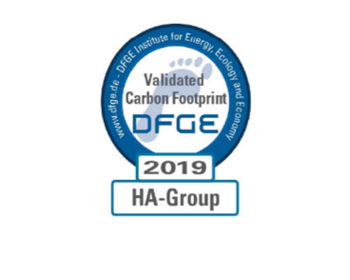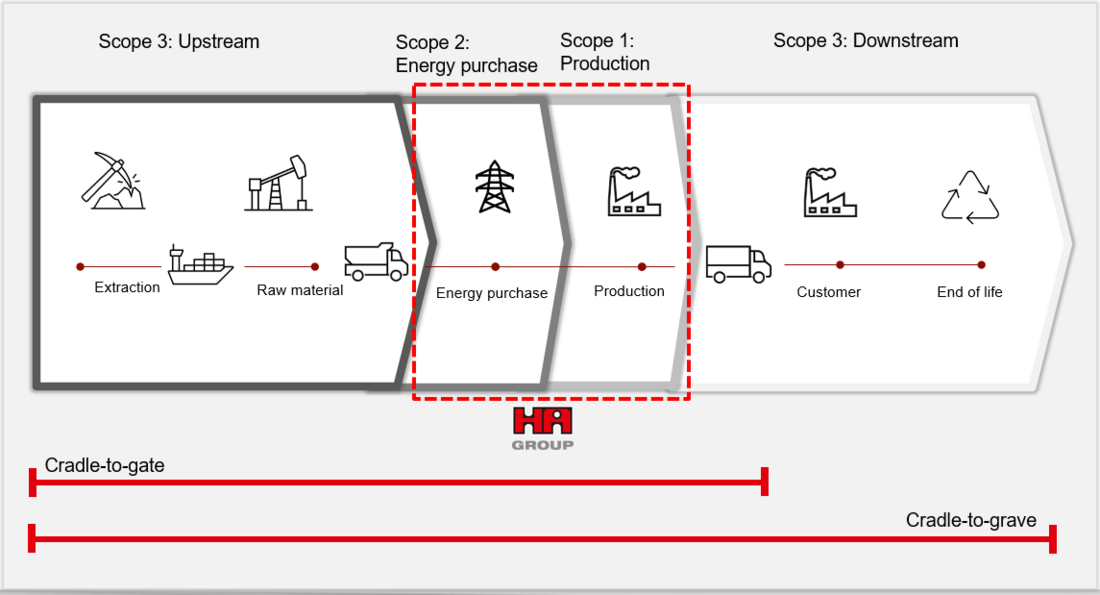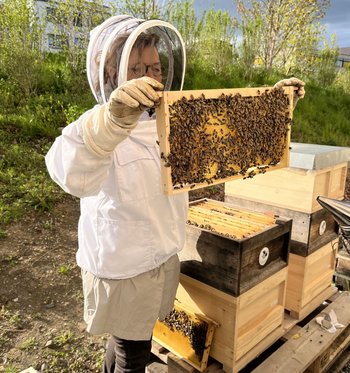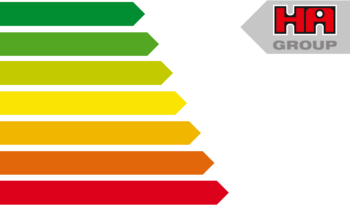Climate & Environmental Management
One of our primary goals in climate and environmental management is to significantly reduce our greenhouse gas emissions. In order to achieve this goal, we have drawn up an initial greenhouse gas balance sheet (corporate carbon footprint) for the HA Group for 2019. This is our defined base year, which we use to determine the current status and which serves as a reference for monitoring progress. By identifying emission drivers (hotspots), we can derive and implement targeted measures to optimize them.
The HA Group's corporate carbon footprint for the base year 2019 is 886,000 t CO2eq.
This figure is not just a snapshot for us, but also the basis and motivation for our ambitious targets to reduce greenhouse gas emissions. As a result of the dedicated implementation of initial actions, we were able to reduce our direct (operational) emissions (Scope 1 & 2) by almost 11% with the first recalculation of the corporate carbon footprint for 2022. This represents an important first step towards achieving our goal of "reducing our direct emissions (Scope 1 & 2) by 30% by 2030". Further measures - also with the focus on Scope 3 emissions - are already planned or are currently being implemented.
What does the Corporate Carbon Footprint contain?
Our footprint includes all relevant greenhouse gas emissions of the HA Group, including its individual companies. In doing so, we follow the cradle-to-(customer) gate approach. This means that we take into account all direct and indirect emissions (Scope 1-3) that arise as a result of our business activities within the system under consideration. We record emissions from raw material extraction through delivery to our plants, our own production, and delivery of finished products to our customers' factory gates.
Umweltmanagement
HA climate goals
Based on the available CCF results, it was possible to define corresponding targets for the HA Group with the HA sustainability strategy, which was developed as part of the 2030+ strategy:
- By 2030, we aim to reduce our emissions for which we are directly responsible by 30% compared to the 2019 baseline.
- By 2045, we want to achieve climate neutrality (net zero).
The framework has thus been set to achieve these important milestones. A strategic development path has been defined, which will be consistently pursued through the implementation of appropriate action and implementation plans in close cooperation with the subsidiaries of the HA Group. In line with our commitment to the 10 principles of the UN Global Compact and the 17 SDGs of the United Nations, we align our actions with the objective of the Paris Climate Agreement to limit global warming to well below 2°C, preferably to 1.5°C. The achievement of these targets is ensured by regular reviews.
Environmental management
In addition to protecting the climate, our holistic approach to environmental protection focuses primarily on the efficient and careful use of natural resources, water and energy, and the protection of soil, air and water from pollution as a priority corporate objective.
For this reason, a certified environmental management system is already in use at many HA Group sites and its application is being continuously expanded.
In addition, the protection and promotion of biodiversity and ecosystems - at both regional and global level - is one of the requirements that the HA Group meets with suitable measures.
Energy efficiency and renewable energy
With the aim of optimizing the use of energy in the company economically and ecologically, HA has introduced an energy management system in accordance with ISO 50001. For us, certification is not only recognition of what we have achieved so far, but also an incentive and obligation to continuously pursue the topic of energy efficiency.
Energy-efficient management is an important corporate goal for us and is anchored in our management principles.
- We are successively converting all HA companies to the purchase of electricity from renewable sources. This also includes the installation of photovoltaic systems at our plants.
- We take environmental and energy factors into account in all operational decisions, including planning and procurement.
- Emissions and energy consumption are measured regularly, and potential improvements are identified and implemented.
At HA, we do not just pay lip service to the efficient use of energy and the sparing use of resources, but have been living this reality for a long time. As a supplier to the energy-intensive foundry industry, we are constantly working on solutions that help improve sustainability in this sector.
Circular economy
The foundry industry is a perfect example of a circular economy in action. At Hüttenes-Albertus, we are also concerned with the reuse of our products in order to promote their return to the material cycle. The same applies to our research processes, with factors such as sustainability and recycling playing a crucial role in our innovations.




